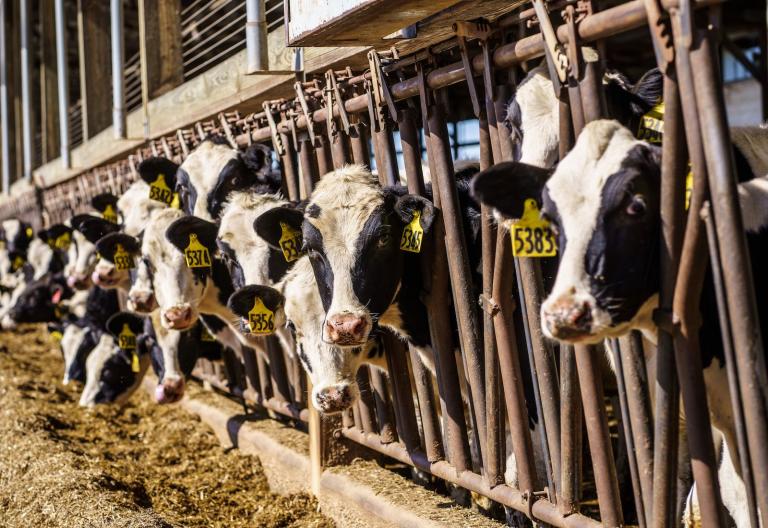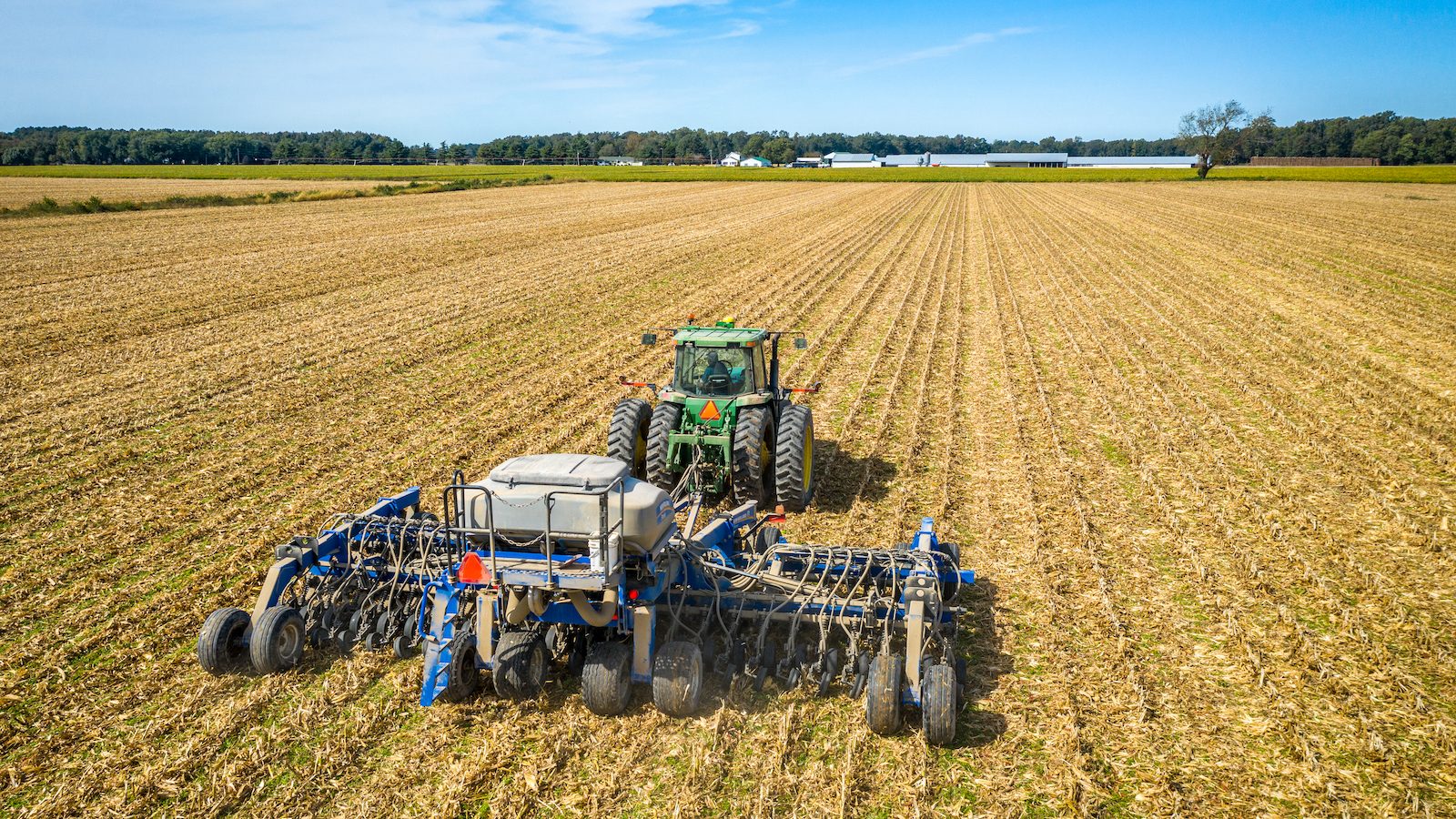When Congress passed an omnibus spending bill in December, it included a bit of bipartisan climate legislation that had been languishing on the Hill since its introduction in 2020. The Growing Climate Solutions Act, supported by climate advocates and farmers alike, was devised to get the nation’s growers to adopt climate-friendly practices by encouraging their participation in the carbon market.
The bill’s backers hope the law will make it easier for farmers and landowners to get paid for storing carbon in their fields and forests. Farmers have struggled to navigate the complex web of companies offering to help them sell carbon credits, and have been confused by the number of different standards that exist for measuring carbon. They’re also worried about being fairly compensated.
But it’s unclear how the law will address farmers’ biggest concerns. A U.S. Department of Agriculture program created by the legislation may help by disseminating information and bringing some federal scrutiny to the unregulated credit market. Yet it does nothing to address key questions about the underlying science of soil carbon sequestration, and whether carbon offsets are even an effective way to incentivize it.
“The Growing Climate Solutions Act is a step in the right direction,” said Giana Amador, co-founder of Carbon180, a nonprofit that advocates for policies that support removing carbon from the atmosphere. “But we need a lot more investment in science, research and development, and early demonstration projects that give us a lot more certainty about the carbon being stored.”
The Biden administration’s climate strategy includes investing in so-called nature-based solutions like storing carbon in soil. One review of sequestration strategies found it is “practically achievable” for U.S. croplands to soak up 250 million metric tons of carbon per year, or about 4 percent of what the country emitted in 2020. Some of the methods analyzed included planting crops in the off season to pull more carbon into the soil, a practice called cover copping; reducing tillage, which can limit the carbon-releasing decay of organic matter in the soil; and converting cropland to grasses or other perennials.
Farmers are increasingly interested in these techniques, which also help retain nutrients, reduce erosion, improve water filtration, and prevent nitrogen from running off into streams and watersheds. But absent financial incentives, the risk of embracing such changes can seem too high, the rewards too uncertain. A growing number of startups are eager to help farmers adopt them by generating credits for the carbon they store and selling them as offsets to anyone looking to reduce their emissions footprint.
Paul Overby, who grows sunflowers, canola, and other crops in North Dakota, started working with the startup Indigo Ag to sell carbon credits a few years ago. He urged his state’s congressional delegation to support the Growing Climate Solutions Act because he wants others to do the same. He said many of his peers don’t understand the role carbon plays in soil, or how it can be sequestered or released. “There’s an opportunity for farmers to make a little money, to help them do good things for the environment,” he said. “In a lot of cases, they’re going to be helping themselves and their farm as well.”
The law directs the Department of Agriculture to spend the next several months reviewing the carbon market, looking at the number and types of companies involved in the generation and sale of credits, the level of demand for them, and what might improve participation. Eventually, the agency is expected to create an online resource where farmers and landowners can learn about how to generate credits and browse a directory of companies offering technical assistance and carbon storage verification services.
That’s not exactly what Indiana farmer Brent Bible had in mind when he testified in favor of the legislation before the Senate Committee on Agriculture, Nutrition, and Forestry in 2020. He’d already experimented with no-till farming and planting cover crops on parts of his land with the help of several USDA grants, including one from the Environmental Quality Incentives Program. Bible told lawmakers that the financial challenges many farmers face inhibit wider adoption of sequestration practices. He saw potential in the carbon credit market, but so far, its cost and complexity outweighed any benefits.
When Bible testified, the Growing Climate Solutions Act was pitched as a certification program in which the U.S. Department of Agriculture would vet companies providing technical assistance and verification. He told Grist he hoped the legislation would help farmers identify reputable partners and bring standardization to a market with more than a dozen protocols, each with different requirements and approaches to measuring how much carbon is sequestered. “I know that a bushel of corn weighs 56 pounds, that’s the standard,” he said. “There needs to be that same type of standardization in the carbon space. That’s how you build confidence around a market.”
But the bill Biden signed on December 29 permits any company to sign up for inclusion on the USDA’s site. And although it directs the agency to publish “widely accepted protocols” for generating carbon credits, it doesn’t otherwise regulate these guidelines or create a clear path to the kind of standardization that would give farmers, and those buying their credits, confidence.
It also doesn’t address some known challenges, not the least of which is measuring how much carbon is being stored. “Right now, we don’t have the technology to accurately measure soil carbon in a cost efficient and scalable way,” said Cristel Zoebisch, a senior policy advisor at Carbon180. Some scientists say there’s insufficient evidence that techniques like no-till and cover cropping can increase soil carbon by any meaningful degree. The Inflation Reduction Act provided $300 million for the USDA to support greenhouse gas data collection and accounting. Carbon180 wants to secure additional funding for research, standards development, and demonstration trials in the 2023 Farm Bill, a legislative package that governs a number of federal agricultural programs.
There’s a risk that in the meantime, a federal directory of carbon credit companies “could give a veneer that the carbon markets are more mature than they really are,” said Eric Slessarev, a soil ecologist at Lawrence Livermore National Laboratory.
Part of the challenge is that scientists are still untangling a central mystery around soil carbon. “Why does some soil carbon persist? And why does the remainder not? And how does that play out differently in different places?” said Slessarev. “We know that these things are place-dependent, but we don’t quite understand how or why.”
Another fundamental question is whether offsets are an appropriate tool for funding sequestration in the first place. One reason Bible has not signed up to generate carbon credits is that many of the companies offering them require a commitment of at least five years, if not 10 or 20. A lot can happen in that time, he said. What if flooding or drought require a change in land management practices? How can someone be sure a carbon credit company won’t go bust? Anyone leasing land can’t guarantee the owner won’t sell it. “It’s tough to be able to know what the future looks like,” Bible said.
At the same time, a decade or even two of carbon sequestration is inadequate because the carbon dioxide spewed into the atmosphere by those buying offsets will remain there for millennia.
“I don’t think we’re ever going to get to a point where soil organic carbon is going to be exchangeable with fossil fuel emission, even if we were to get really, really good at measurements,” Slessarev said. “There’s just no way to know how persistent the carbon will be. It depends on not just biophysical factors that people like me can evaluate, but socio-economic ones.”
Bible understands the challenge. He’s not sure what the answer is, but he’s confident that practices like cover cropping and reduced tillage make a difference. “It’s doing something and that’s more than what we’ve done in the past,” he said. “I think we all agree that we have to think about doing something to change the trajectory that exists.”




